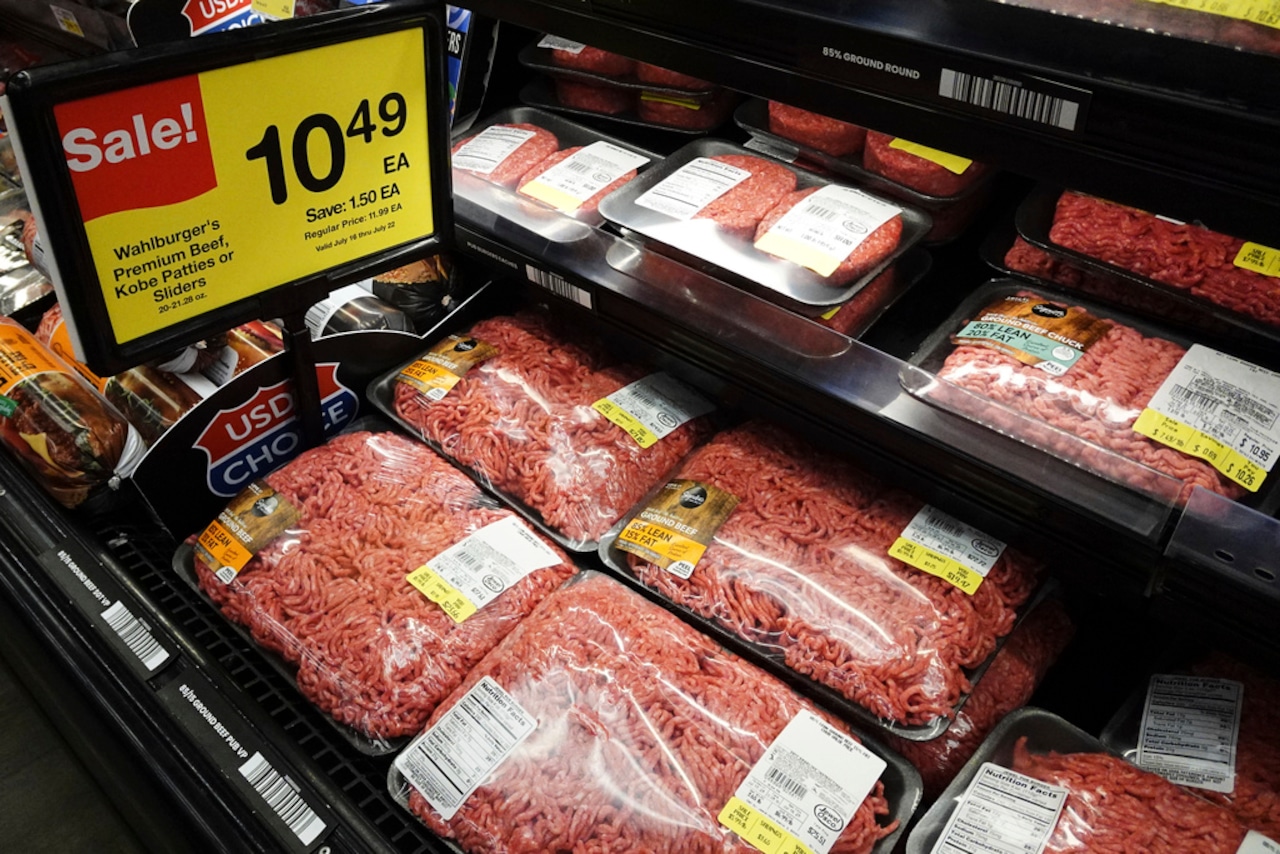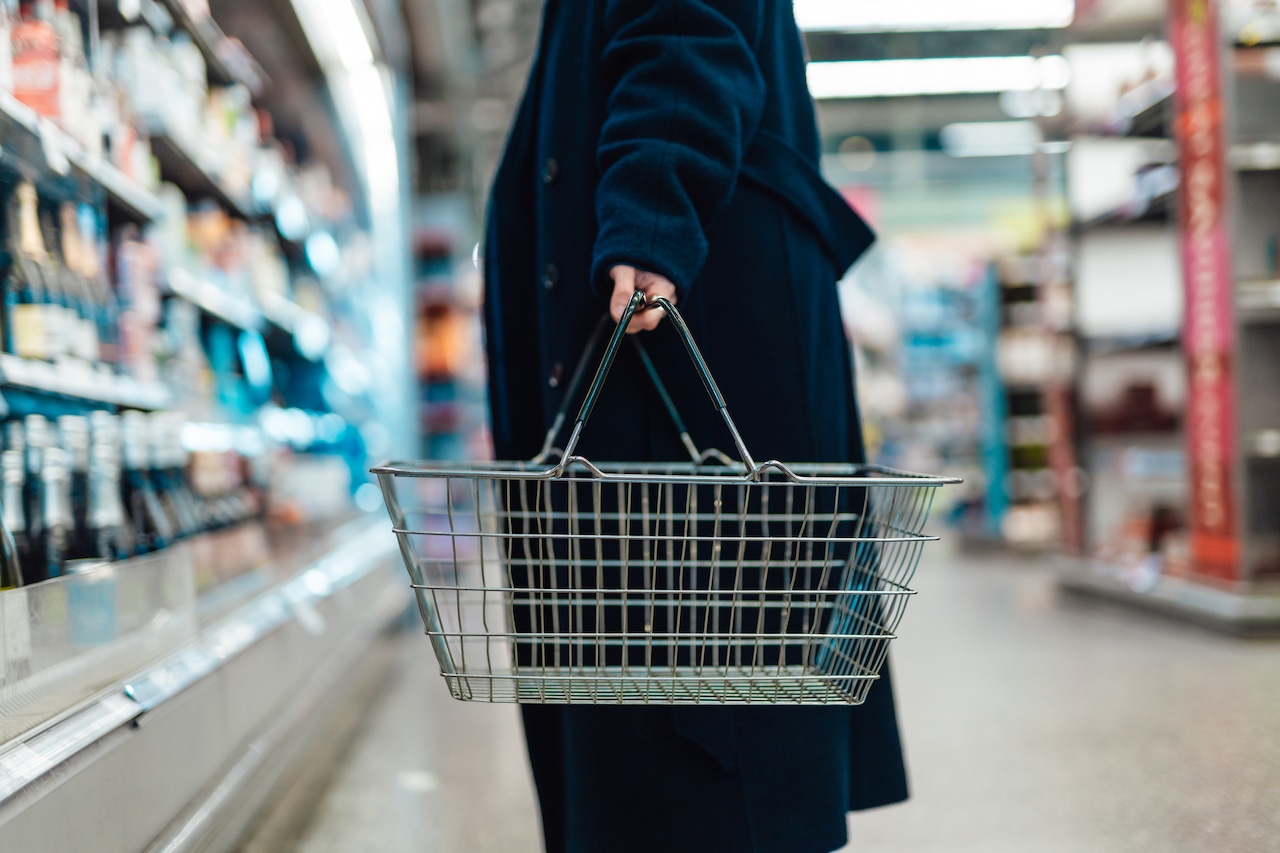Anyone who buys groceries knows food prices are going in one direction: up.
Whether it’s coffee, ground beef or tomatoes, shoppers are forking over more for everyday staples at the checkout.
According to the latest Bureau of Labor Statistics data, grocery prices were up about 2.4% in June over the previous year.
It’s enough to make some shoppers anxious.
A recent poll by The Associated Press-NORC Center for Public Affairs Research found half of all Americans describe the cost of groceries as a “major” source of stress in their life right now, while 33% say it’s a “minor” source of stress.
Reasons for the hikes vary, from President Donald Trump’s tariffs to weather conditions such as floods, record heat and hurricanes.
Last week, Trump signed executive orders to impose tariffs of between 15 and 41 percent on goods shipped to the U.S. from more than 67 countries. The new duties go into effect on Aug. 7.
Trump argues the tariffs will boost U.S. manufacturing and protect jobs. Tariffs are taxes charged on goods bought from other countries.
Under those tariffs, the Yale Budget Lab projects food prices will rise 3.4 percent in the short-run and stay 2.9 percent higher in the longer term.
Tariffs are expected to impact about 75 percent of U.S. food imports, according to The Tax Foundation, a nonpartisan Washington-based think tank. It estimates higher prices on liqueurs and spirits, baked goods, coffee, fish and beer.
But it’s not just tariffs driving the hikes.
Prices on some items such as chocolate are skyrocketing due to poor weather conditions in key cocoa growing regions of the world. Beef prices are soaring as cattle supplies remain tight.
Customers have been taking notice, said Scott Karns, chairman of Karns Foods based in Silver Spring Township. At his regional grocery chain’s stores he said shoppers are reacting by gravitating toward more store brands and stocking up during sales.
“I think they are more uneasy right now and more value-driven,” he said.
Along with buying store brands, he noted customers are making swaps, replacing steaks for ground beef to counter higher beef prices.
High prices might be making headlines, but Karns said he’s optimistic relief is in sight.
Already, Karns said national manufacturers such as Kraft Heinz and Kellogg’s are offering more deals and promotions to counter softening sales and avoid losing market share.
While select items will be impacted by tariffs or other factors such as weather, Karns said he expects overall inflation to stabilize.
“Prices went up significantly in the last couple of years, but we are starting to see softening,” he said. “I’m cautiously optimistic in the next year we won’t see big food inflation.”
Here’s a closer look at seven everyday items that are already seeing price increases or are expected to soon
Bananas
Expect to pay higher prices for a bunch of bananas.
Produce imported from Central and South America, including cucumbers, pineapples and peppers, are likely to go up under the new reciprocal tariffs.
The hikes are hard to avoid, mostly because about 90 percent of bananas are grown outside the United States in Colombia, Costa Rica, Ecuador, Guatemala and Honduras.
Paper Products
Prices in the paper aisle for products like toilet paper and paper towels have been on the rise.
Procter & Gamble recently announced it is raising prices in reaction to tariffs.
The maker of such products as Charmin toilet paper and Tide laundry detergent said it will raise prices on about 25% of its products starting this month.
The company said it expects to take a $1 billion hit from tariffs at a time when consumers are becoming more cautious about spending.
P&G imports raw ingredients, packaging materials and some finished products into the U.S. from China.
According to CNN, the company’s CEO Jon Moeller blamed several factors for deflated consumer spending on its products, including “tariffs, inflation, interest rates, political and social divisiveness.”
 The vast majority of U.S. adults are at least somewhat stressed about the cost of groceries, a new poll finds, as prices continue to rise and concerns about the impact of President Donald Trump’s tariffs remain widespread. (AP Photo/Nam Y. Huh)APBeef
The vast majority of U.S. adults are at least somewhat stressed about the cost of groceries, a new poll finds, as prices continue to rise and concerns about the impact of President Donald Trump’s tariffs remain widespread. (AP Photo/Nam Y. Huh)APBeef
Mike Pronio, owner of the family-operated Pronio’s Market in Derry Township, said beef prices are through the roof.
“It’s been a problem for a while, but it really got bad. Every week it goes up 20 to 30 cents a pound,” he said, adding the price leveled off last week.
The average price of a pound of ground beef rose to $6.12 in June, up nearly 12% from a year ago, according to U.S. government data. The average price of all uncooked beef steaks rose 8% to $11.49 per pound.
Beef prices have been steadily rising over the past 20 years because the supply of cattle remains tight while beef remains popular.
Many factors are behind the declines including drought and cattle prices and the emergence of a parasite in Mexico.
Chocolate
Buying chocolate is hardly sweet these days.
Chocolate prices have been ticking upwards the past several years. The increases are the result of bad weather and crop disease in Ghana and the Ivory Coast in Western Africa, one of the world’s key cocoa growing regions.
Last month, The Hershey Company said it informed its retail partners it is raising prices by a percentage in the “low double-digits.”
The Derry Township company cites rising cocoa prices as the reason.
In 2024, cocoa futures increased 178% after a 61% hike in 2023, according to data from FactSet.
Coffee
A tariff imposed on a key coffee growing region of the world plus supply chain constraints are pushing up coffee prices.
Trump recently placed a 50% tariff on Brazil, one of the United States’ key suppliers of arabica beans.
“Americans are going to feel the impact of the tariffs in their morning brew. That’s a very significant tax on the leading producer of coffee,” food economist and Michigan State University professor David Ortega, told USA Today.
The tariffs add to already rising coffee prices, which have steadily been climbing due to droughts in key growing areas such as Brazil and Thailand.
The average price of a pound of ground roast coffee is about $8.13, up from $6.25 the year prior and $4.52 in 2020, according to the Bureau of Labor Statistics.
Beer, wine & spirits
Many popular imported alcoholic beverages could see price hikes, whether Irish whiskey, Champagne or Italian wine.
The U.S. and European Union are still hashing out whether alcohol will be included or exempt from 15 percent tariffs on European goods.
“It is extremely disappointing and utterly exasperating that the U.S. and EU have not yet come to an agreement on spirits, which is an easy win for the United States that will help boost our economic vitality during this challenging time for the hospitality industry,” Distilled Spirits Council President and CEO Chris Swonger said in a statement.
Fish & Other Seafood
Prices of imported seafood and fish are likely to increase under tariffs.
In 2020, the United States imported about 80 percent of seafood consumed, according to NOAA Fisheries.
Imported fish and seafood from countries including Thailand and Indonesia face tariffs of about 20 percent under the latest trade deals.
If you purchase a product or register for an account through a link on our site, we may receive compensation. By using this site, you consent to our User Agreement and agree that your clicks, interactions, and personal information may be collected, recorded, and/or stored by us and social media and other third-party partners in accordance with our Privacy Policy.
